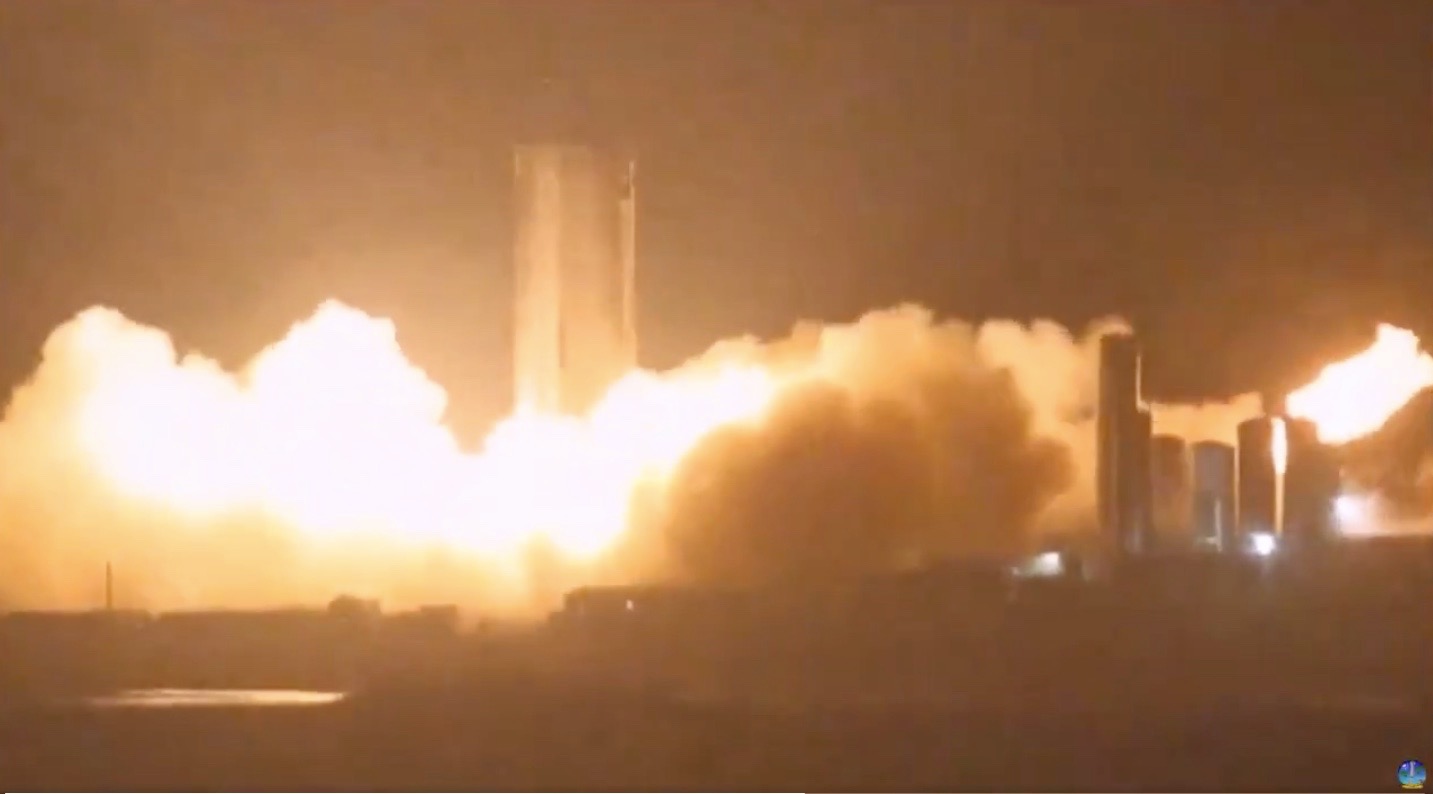SpaceX's Starship SN4 prototype fires rocket engine for 1st time
SpaceX's newest Starship prototype has fired its engine for the first time, potentially paving the way for a test flight in the very near future.
The SN4, the latest test version of SpaceX's Mars-colonizing Starship vehicle, aced a "static fire" Tuesday night (May 5), lighting up its single Raptor engine briefly while remaining on the ground at the company's South Texas facilities.
"Starship SN4 passed static fire," SpaceX founder and CEO Elon Musk said via Twitter late on Tuesday.
You can see video of the static fire here, courtesy of SPadre.com, as well as from NASASpaceflight.com here and from LapPadre here.
Related: SpaceX's Starship and Super Heavy rocket in pictures
Starship SN4 passed static fireMay 6, 2020
The successful test was the second big milestone for the billionaire entrepreneur in quick succession: His girlfriend, the singer Grimes, gave birth to the couple's son on Monday (May 4).
With the static fire in the rearview mirror, SpaceX can begin prepping the SN4 for its next big moment: an uncrewed test flight, which Musk has said will take the vehicle to a target altitude of about 500 feet (150 meters).
Just one Starship prototype has gotten off the ground to date — a stubby craft called Starhopper, which made a few brief jaunts last year before being retired.
Breaking space news, the latest updates on rocket launches, skywatching events and more!
The SN4's flying days will doubtless be short as well. SpaceX is already building the SN5, which will have three Raptors and will soar to a target altitude of about 12 miles (20 kilometers) during its test missions, if all goes according to plan.
The final, operational Starship will sport six Raptor engines and be powerful enough to launch itself off the moon and Mars. But the 100-passenger spaceship will need help getting off Earth; it will launch from our planet's surface atop a giant rocket called Super Heavy, which will be powered by 31 Raptors.
Both Starship and Super Heavy will be fully and rapidly reusable, Musk has said. Each Super Heavy will come down for vertical landings here on Earth shortly after liftoff, as the first stages of SpaceX Falcon 9 and Falcon Heavy rockets already do. And each Starship will be capable of flying many missions, be they to the moon, Mars or other deep-space destinations.
NASA recently awarded funding to SpaceX to develop Starship as a potential human landing system for the agency's Artemis program of lunar exploration, and the vehicle is eligible to carry robotic NASA payloads to the moon's surface as well. But the Red Planet is Musk's main target for the 165-foot-tall (50 m) spaceship.
The billionaire entrepreneur envisions huge fleets of Starships departing for Mars every 26 months, when Earth and the fourth rock from the sun are properly aligned for interplanetary missions. Musk wants such flights to help establish a million-person city on the Red Planet, and to do it relatively soon — ideally, within the next 50 to 100 years.
Tuesday night's static fire brought that ambitious dream one small step closer to reality.
- SpaceX: Facts about Elon Musk's private spaceflight company
- Welders wanted: SpaceX is hiring to ramp up production of stainless steel Starship
- How living on Mars could challenge colonists (infographic)
Mike Wall is the author of "Out There" (Grand Central Publishing, 2018; illustrated by Karl Tate), a book about the search for alien life. Follow him on Twitter @michaeldwall. Follow us on Twitter @Spacedotcom or Facebook.
OFFER: Save 45% on 'All About Space' 'How it Works' and 'All About History'!
For a limited time, you can take out a digital subscription to any of our best-selling science magazines for just $2.38 per month, or 45% off the standard price for the first three months.

Michael Wall is a Senior Space Writer with Space.com and joined the team in 2010. He primarily covers exoplanets, spaceflight and military space, but has been known to dabble in the space art beat. His book about the search for alien life, "Out There," was published on Nov. 13, 2018. Before becoming a science writer, Michael worked as a herpetologist and wildlife biologist. He has a Ph.D. in evolutionary biology from the University of Sydney, Australia, a bachelor's degree from the University of Arizona, and a graduate certificate in science writing from the University of California, Santa Cruz. To find out what his latest project is, you can follow Michael on Twitter.


